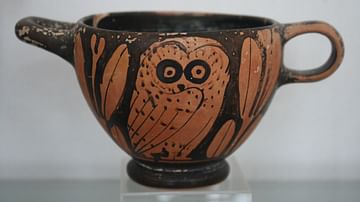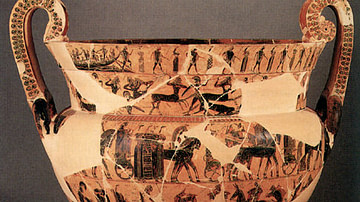Video
Cite This Work
APA Style
Museum, G. (2016, February 19). Making a Molded Athenian Vase. World History Encyclopedia. Retrieved from https://www.worldhistory.org/video/754/making-a-molded-athenian-vase/
Chicago Style
Museum, Getty. "Making a Molded Athenian Vase." World History Encyclopedia. Last modified February 19, 2016. https://www.worldhistory.org/video/754/making-a-molded-athenian-vase/.
MLA Style
Museum, Getty. "Making a Molded Athenian Vase." World History Encyclopedia. World History Encyclopedia, 19 Feb 2016, https://www.worldhistory.org/video/754/making-a-molded-athenian-vase/. Web. 07 May 2025.





